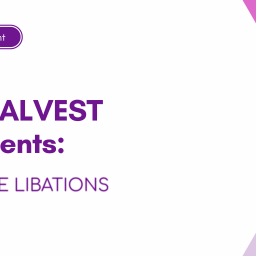
On June 5th, during the Localvest Quick Pitch event, we had the privilege of hearing from Army veteran Dr. Jennifer Jacobs, the founder of Connect Our Kids. This non-profit organization employs advanced technology, originally designed to track terrorist networks, to locate family members of the over 650,000 children in the U.S. foster care system each year. Dr. Jacobs’ presentation was not just a pitch; it was a masterclass in engaging potential investors and inspiring action.
Here’s a breakdown of Jennifer’s compelling approach:
Drawing Them In Emotionally
Jennifer began by vividly painting a picture: “Imagine one of your loved ones is in foster care, bouncing from home to home every few weeks…” This opening doesn’t merely state the problem; it makes you feel it. It’s visceral and gripping, pulling you to the edge of your seat and making you want to take action.
Addressing the Elephant in the Room
With a background in nuclear physics, Jennifer’s expertise might seem unrelated to foster care. However, she skillfully bridged this gap by sharing how her experience in tracking terrorist networks paralleled the challenges faced by social workers in locating family members. By addressing this potential disconnect head-on, she kept the audience focused on solving the problem rather than being distracted by her unconventional background.
Keeping It Relatable
Jennifer ensured that the complexity of her technology was presented in an accessible way. She avoided overwhelming details, opting instead for a clear and concise explanation of how it works. Mock-ups and a simple three-step process helped the audience visualize the solution without getting bogged down in technicalities. This approach reassured potential investors and supporters that there is a solid plan in place.
Leveraging Customer Success
Early success stories and metrics are powerful tools in any pitch. Jennifer shared compelling statistics and the story of Abby, a child who benefited from Connect Our Kids. By highlighting the $500 cost per child for using the system end-to-end, she provided a clear understanding of the organization’s impact and efficiency. These tangible results helped validate the organization’s effectiveness and potential for scalability.
Making Numbers Human with Case Studies
Jennifer’s narrative wasn’t just about numbers; it was about people. The story of Abby personalized the statistics, linking the problem, solution, and technology to a real, relatable case. This human element brought the audience back to the emotional core of the issue, reinforcing the urgency and importance of their support.
Clear Calls to Action
Finally, Jennifer didn’t leave her audience wondering what to do next. She made her calls to action clear and immediate. Whether it was donating, connecting with potential agencies, or simply staying informed, she provided straightforward steps that kept the momentum going.
Applying these lessons to your pitch
Reflect on your own promotional materials. Does your story resonate emotionally? Is it relatable and straightforward? A compelling story goes beyond the numbers, helping potential investors and supporters see the human impact of their involvement.
For a long time, I believed that facts and figures could close deals on their own. However, through witnessing numerous pitches and delivering many myself, I’ve realized that while facts support the story, it’s the story that truly closes the deal. Whether it’s securing a new donation, an investment, or a product sale, your story is key.
So, take a cue from Dr. Jennifer Jacobs. Work on your story and start sharing it with the world.
Need More Customers?
Of course, you do! At Localvest, we’re exploring new ways to help you find paid beta testers and build a list of potential investors for future raises. If this interests you, contact us. We’ll keep you updated and ensure you’re among the first to benefit from this feature when it’s ready.














